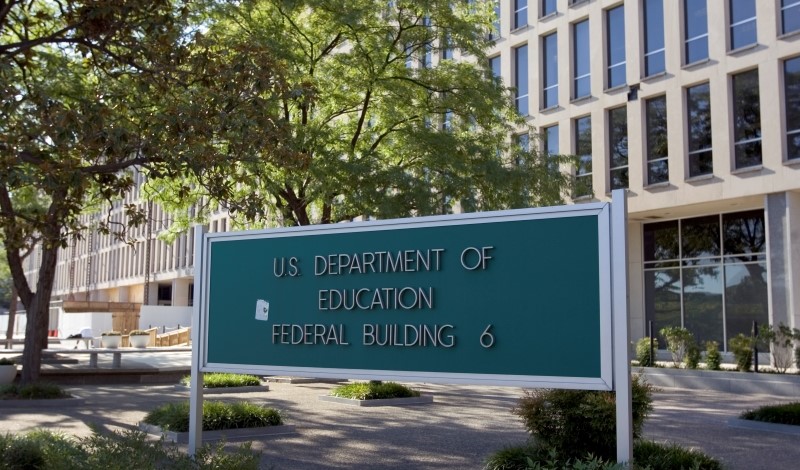
In Biden v. Nebraska, the Supreme Court again asserts its own authority to make society’s most important policy choices.
In its last decision of the term, the Supreme Court invalidated the Biden Administration’s student debt relief plan, which was announced in August 2022 following COVID-19-driven loan repayment pauses by both the Trump and Biden Administrations. The plan would have eliminated debt of up to $10,000—or $20,000 for Pell grant recipients—for approximately 43 million borrowers.
In announcing its plan, the Administration relied on the HEROES Act, which authorizes the Secretary of Education to “waive or modify any statutory or regulatory provision applicable to the student financial assistance programs … as the Secretary deems necessary in connection with a war or other military operation or national emergency.” The Secretary of Education explained that despite past repayment pauses and other COVID-19 measures, “across-the-board relief” was required in order “to ensure that affected borrowers are not in a worse position financially as a result of the COVID-19 pandemic.” But before the plan could take effect, various plaintiffs sued to enjoin it.
Two of those lawsuits reached the Court. The Court dismissed on standing grounds the first lawsuit, brought by individual borrowers unhappy with their level of relief. In the second case, Chief Justice John Roberts, writing for the Court, first concluded that Missouri, one of the states challenging the program, had standing, and then found that the debt relief plan exceeded the Secretary’s HEROES Act authority.
In the end, the Administration’s debt relief plan was no match for a Court that is increasingly dubious of any broad assertion of agency power. As the Court framed the issue, “the question here is not whether something should be done; it is who has the authority to do it.” The Court purported to identify Congress as singularly empowered to make a decision “of such magnitude and consequence.” But the logic of the opinion positions the Court itself as the ultimate policymaker.
On the threshold question, the Court concluded that Missouri had standing based on an asserted injury to the Missouri Higher Education Loan Authority (MOHELA). That standing determination sits uneasily with some aspects of the factual record, as well as with existing standing principles.
The Court found that because MOHELA, a state-created loan servicing agency, was an instrumentality of Missouri “subject to the state’s supervision and control,” an injury to MOHELA was, in turn, an injury to the state. The Court noted that because the plan would discharge a significant number of federal student loans, “MOHELA could no longer service those closed accounts, costing it, by Missouri’s estimate, $44 million a year in fees.”
But based on MOHELA’s own internal communications, it is by no means clear that MOHELA would be financially harmed by the plan. Moreover, MOHELA’s conspicuous absence from the case, a subject of repeated inquiry during oral argument, raised additional questions about the plan’s impact on MOHELA.
Furthermore, classifying MOHELA as an “instrumentality of the state” is at best dubious. As Justice Elena Kagan noted in dissent, “state law created MOHELA, but in so doing set it apart,” making it a separate entity both legally and financially. This legal separation typically makes all the difference for standing purposes: the Court has held repeatedly that plaintiffs generally may not base their claims of injury on the “legal rights and interest” of a third party, in particular where that third party may sue on their own behalf.
After finding that Missouri had Article III standing, the Court concluded that the forgiveness plan was unlawful under the HEROES Act, holding that the Act’s “waive or modify” language only authorized the Secretary to make relatively modest changes to existing repayment obligations.
To reach that conclusion, the majority focused on the statutory term “modify” and used a variety of sources to interpret its meaning and scope: dictionary definitions; what it described as “ordinary usage;” a previous case construing the term “modify” in a wholly different statutory context; and earlier invocations of the HEROES Act—most of which were, in the Court’s view, minor and procedural.
As for the statutory term “waiver,” the Court found it difficult to identify the specific provisions of law being waived. In addition, the majority opinion reasoned that “the Secretary’s invocation of the waiver power here does not remotely resemble how it has been used on prior occasions.” Although this type of “course of conduct” evidence may be a relevant tool in discerning statutory meaning, it is a peculiar one for a Court of self-proclaimed textualists.
The Court then invoked its increasingly familiar “major questions doctrine” which, as the Court explained in West Virginia v. EPA, applies when an agency claims an “extraordinary grant” of regulatory authority anchored in “‘modest words,’ ‘vague terms,’ or ‘subtle devices.’” In such circumstances, the “‘history and the breadth’” of the asserted regulatory power provide a basis for the Court to pause before concluding that Congress in fact meant to confer such authority, and the agency at hand must identify “clear congressional authorization” for the authority it claims.
The major questions doctrine, which has been invoked in a handful of cases since 2000, initially operated as something of an exception to Chevron deference. But in the last few years, it has morphed into a powerful limitation on agency authority whenever the Court characterizes an agency action as involving a matter of deep or vast “economic and political significance.” Under such circumstances, the Court requires that the agency action under review be justified by crystal-clear statutory language—something the Court seems invariably to find lacking.
In the student loan case, the majority declared that the economic and political significance of the Secretary of Education’s action is “staggering by any measure,” based on both the price tag—larger than other programs the Court has invalidated under the major questions doctrine—and the intense political debates that the program spurred. Accordingly, the majority concluded that the plan could only survive if justified by “clear congressional authorization,” which, in the Court’s view, the HEROES Act did not supply.
Even in the face of a lengthy concurrence by Justice Amy Coney Barrett defending the major questions doctrine as consistent with precepts of textualism—one that seemingly failed to convince any of her colleagues—the most important opinion may have been Justice Kagan’s blistering dissent.
Justice Kagan, after accusing the majority of exceeding “its proper, limited role in our nation’s governance,” offered a point-by-point refutation of the majority. She also levied a striking charge: that the Court, presumably by both casting aside standing limits and imposing its policy views on the country—including through what she called its “made-up major questions doctrine”—violated the Constitution.
As some critics of the majority’s decision have noted, Justice Kagan’s dissent rejects the notion that the Court is “somehow outside the constitutional system,” instead seeking to remind the public that the Court is an institutional actor like any other.
The Chief Justice responded directly to this charge, decrying the “disturbing feature of some recent opinions to criticize the decisions with which they disagree as going beyond the proper role of the judiciary.” In his view, the case involved a mere “heartfelt disagreement” on a matter of statutory interpretation, and suggesting otherwise was harmful to both the Supreme Court and the country.
But, as Justice Kagan responded, “justices throughout history have raised the alarm when the Court has overreached.” As her response made clear, to some informed readers, the real “major question” is how to constrain a Court that appears increasingly eager to substitute its own judgment for that of the country’s policymakers.
This essay is one of a nine-part series entitled The Supreme Court’s 2022-2023 Regulatory Term.





